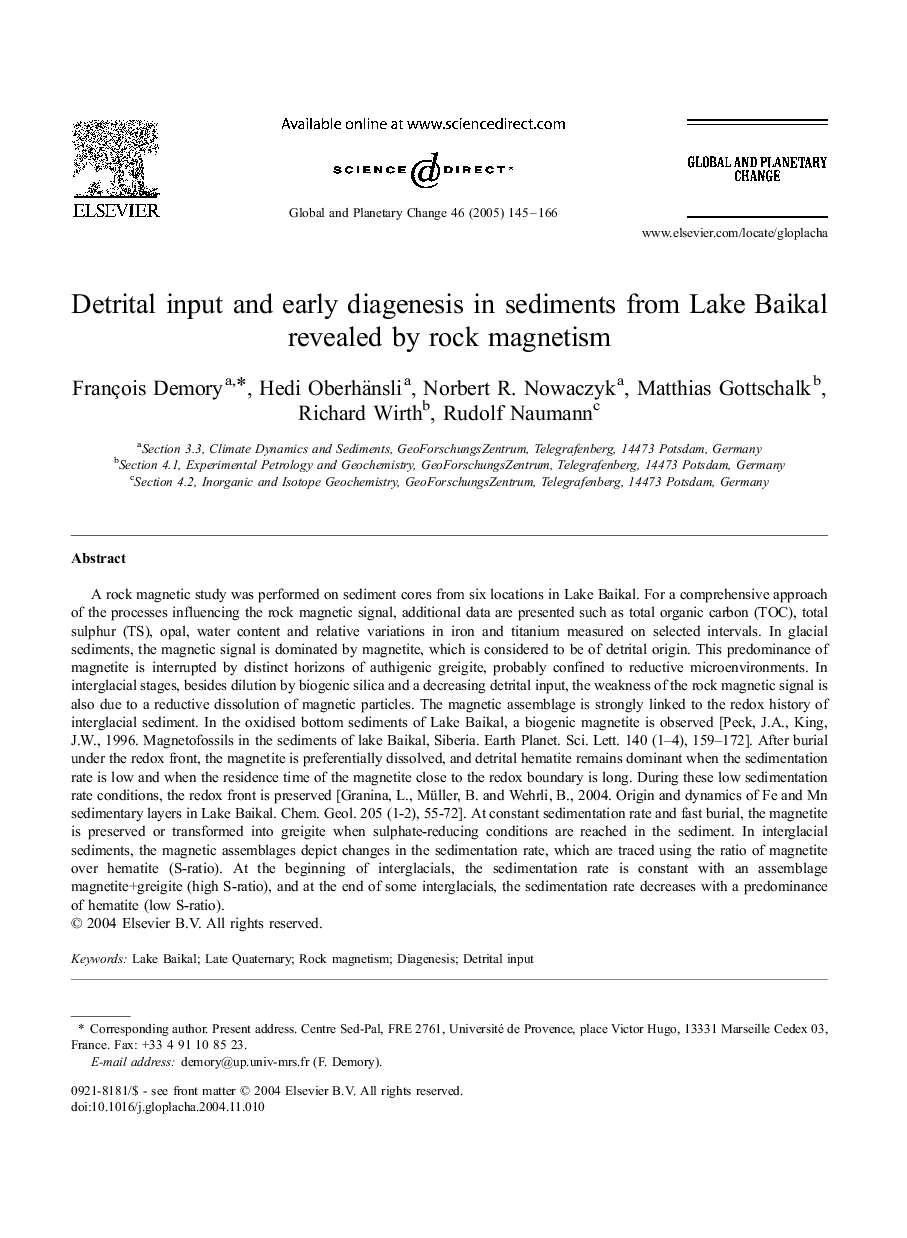| Article ID | Journal | Published Year | Pages | File Type |
|---|---|---|---|---|
| 9462401 | Global and Planetary Change | 2005 | 22 Pages |
Abstract
A rock magnetic study was performed on sediment cores from six locations in Lake Baikal. For a comprehensive approach of the processes influencing the rock magnetic signal, additional data are presented such as total organic carbon (TOC), total sulphur (TS), opal, water content and relative variations in iron and titanium measured on selected intervals. In glacial sediments, the magnetic signal is dominated by magnetite, which is considered to be of detrital origin. This predominance of magnetite is interrupted by distinct horizons of authigenic greigite, probably confined to reductive microenvironments. In interglacial stages, besides dilution by biogenic silica and a decreasing detrital input, the weakness of the rock magnetic signal is also due to a reductive dissolution of magnetic particles. The magnetic assemblage is strongly linked to the redox history of interglacial sediment. In the oxidised bottom sediments of Lake Baikal, a biogenic magnetite is observed [Peck, J.A., King, J.W., 1996. Magnetofossils in the sediments of lake Baikal, Siberia. Earth Planet. Sci. Lett. 140 (1-4), 159-172]. After burial under the redox front, the magnetite is preferentially dissolved, and detrital hematite remains dominant when the sedimentation rate is low and when the residence time of the magnetite close to the redox boundary is long. During these low sedimentation rate conditions, the redox front is preserved [Granina, L., Müller, B. and Wehrli, B., 2004. Origin and dynamics of Fe and Mn sedimentary layers in Lake Baikal. Chem. Geol. 205 (1-2), 55-72]. At constant sedimentation rate and fast burial, the magnetite is preserved or transformed into greigite when sulphate-reducing conditions are reached in the sediment. In interglacial sediments, the magnetic assemblages depict changes in the sedimentation rate, which are traced using the ratio of magnetite over hematite (S-ratio). At the beginning of interglacials, the sedimentation rate is constant with an assemblage magnetite+greigite (high S-ratio), and at the end of some interglacials, the sedimentation rate decreases with a predominance of hematite (low S-ratio).
Related Topics
Physical Sciences and Engineering
Earth and Planetary Sciences
Earth-Surface Processes
Authors
François Demory, Hedi Oberhänsli, Norbert R. Nowaczyk, Matthias Gottschalk, Richard Wirth, Rudolf Naumann,
